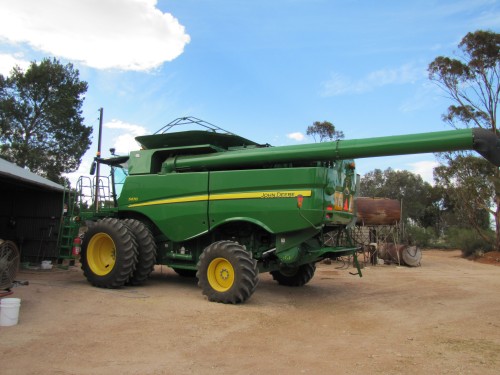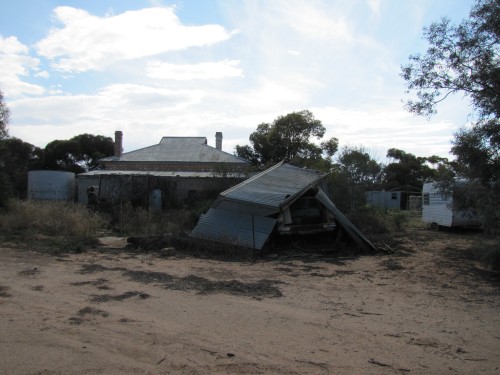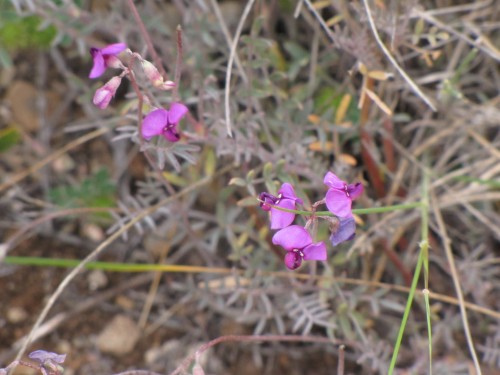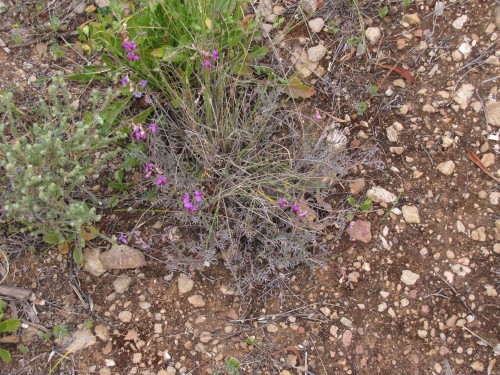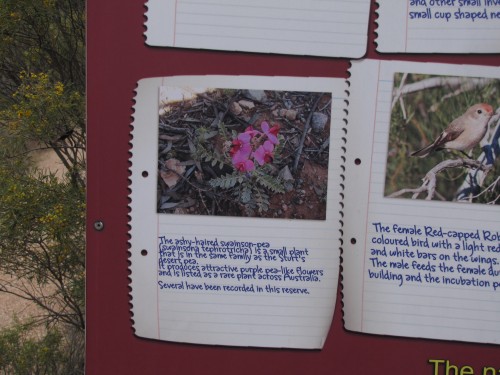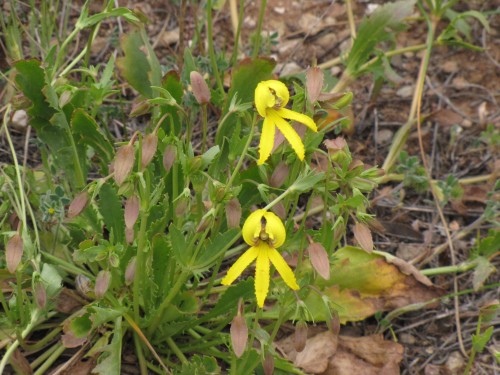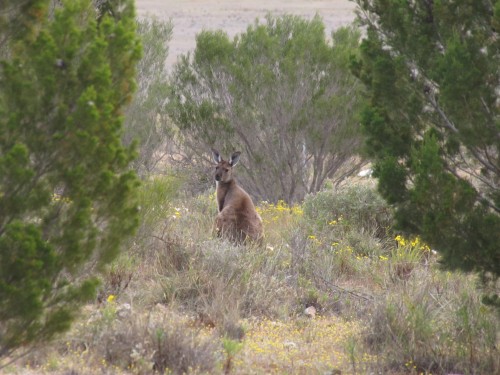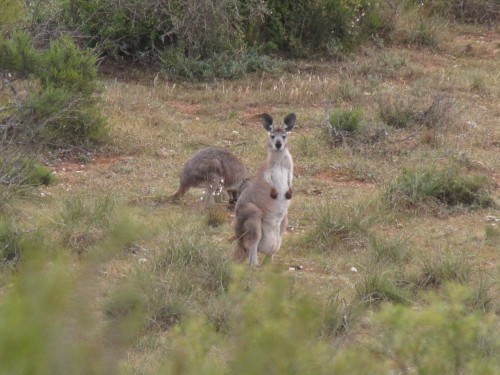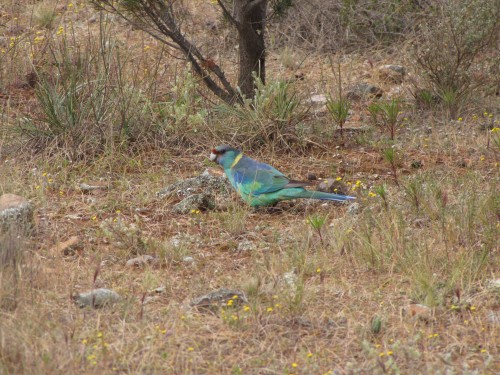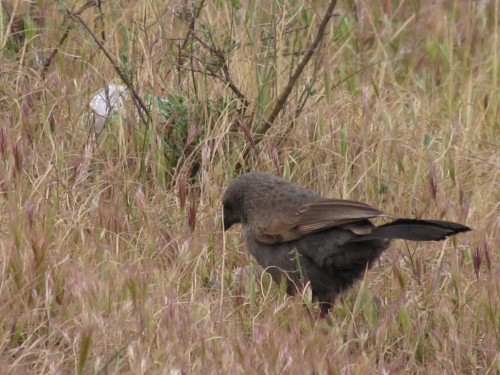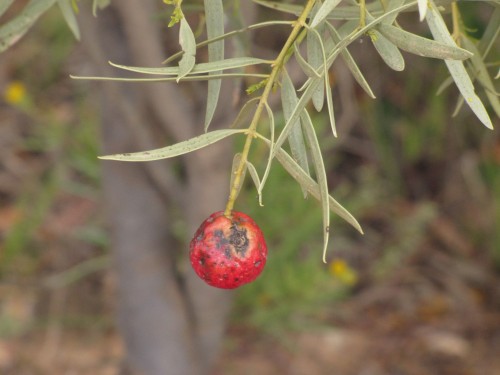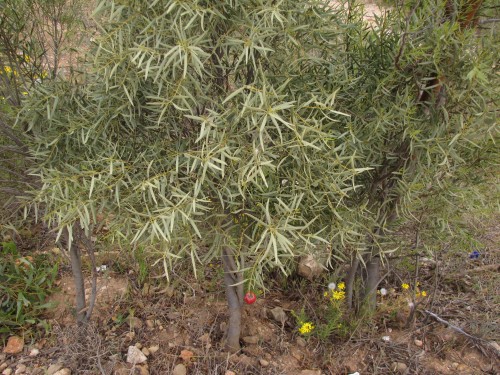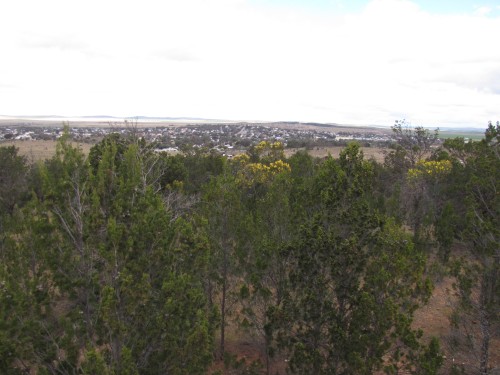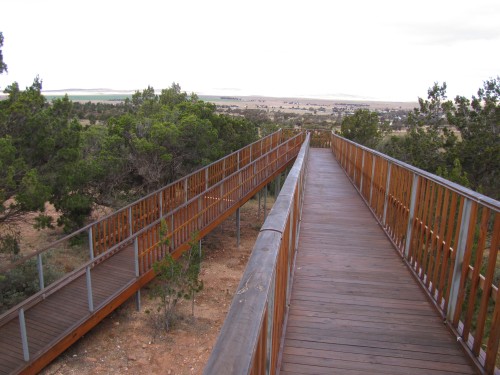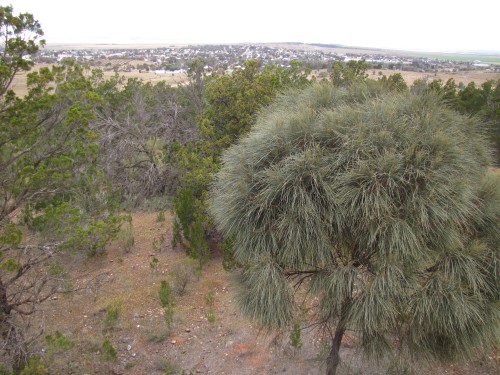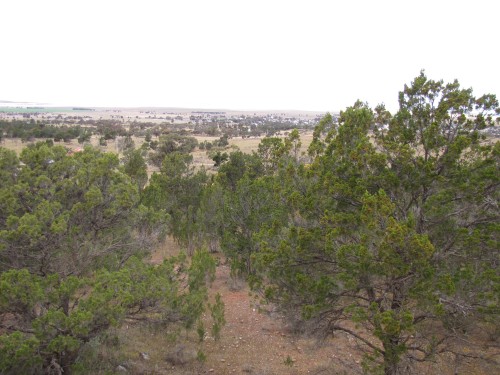Happy New Year
HAPPY NEW YEAR
to all of my readers.
Yes.
I realise that I am over a week late in giving these greetings. Better late than never, I guess.
In reality, I have been very busy enjoying life, family and the great summer weather we have had here in South Australia since Christmas. Before then we had some terribly hot weather. It was far too early in summer; we usually get weather like that in late January and February. Not this time around – it set all kinds of records. On many December days Adelaide was the hottest city in the world.
I haven’t had the chance to do much travelling over recent weeks. One exception was a day trip to the farm where I grew up. The farm is now owned by my nephew. This is near Loxton here in South Australia. We had a family get together over lunch. It was great to get many on my side of the family together, especially seeing my son and his family were over from Sydney.
Speaking of my son – he has visited us in the last few weeks on a number of occasions. This is always great because our grandchildren love coming here to Murray Bridge. They love spending time with me – and playing with me in our swimming pool. Trouble is – they really tire this old fella out. I need plenty of grandad naps to recover.
Tomorrow we travel to Peterborough in the mid-north of our state so that we can have a family get together on my wife’s side.
Stayed tuned – more articles and photos of our travels will be coming up here on this site in the coming weeks and months. Meanwhile, you can enjoy articles about my travels by looking at my archives here.
Trevor
Wildflowers near Peterborough
The wildflowers I saw and was able to photograph in this reserve were a delight. The reserve in question was the Greg Duggan Nature Reserve just north of the township of Peterborough in the mid north of South Australia. Over recent weeks I have shared many of the photos I took there in September last year.
Today I am sharing a few more photos, including the beautiful pea flower shown in the photo above and below. According to the interpretive sign near the entrance (see below) this particular species is rare in Australia, and that there are several specimens in the reserve. I managed to find several in the reserve plus about a dozen or so on the roadside verge near the entrance, most of them flowering.
With a size of only 10 acres this is a great little nature reserve protecting some of the local wildflowers. It is an region where there are very few areas set aside to maintain a viable pool of local flora. This makes this .a valuable reserve along with roadside verges in the district.
But it is not just the wildflowers it protects. A few days ago I wrote about the great diversity of fauna in the area, especially the birds, reptiles and insects. It is therefore pleasing that the local council has protected this area and continue to maintain it. As a bonus, it is a delightful spot for visitors like myself to enjoy.
Wildlife in the Greg Duggan Nature Reserve
Kangaroos
The wildlife in the Greg Duggan Nature Reserve in Peterborough, South Australia is quite diverse. Over recent weeks I have been sharing some of the wildflowers I photographed there in September last year. Despite being only 10 acres in size, the fauna is also quite interesting as well. When I visited a small mob of Western Grey Kangaroos was grazing contentedly on the grasses thriving in the park. The female in the photo below looks decidedly like there is a joey in her pouch.
Introduced Mammals
While I didn’t see any other mammals on this visit apart from several rabbits there are sure to be also a few other introduced mammals in this reserve and nearby, including:
- Red Fox (common)
- Brown Hare (common)
- House Mouse (common)
- Black Rat
- Feral House Cat (widespread)
- Goat (present in large numbers further north in the Flinders Ranges)
- Fallow Deer (small feral populations in nearby Jamestown area)
Native Mammals
- Western Grey Kangaroo (common)
- Echidna (probably present in this area)
- Several Bat species (common)
- Brushtail Possum (possibly present)
Reptiles:
I am no expert in this field but there are many species of reptiles in the wildlife of this area, including:
- Snakes – the common species would be Brown Snakes, but there must be others
- Lizards – many species including Blue-tongues, Stumpy-tailed, geckos, skinks and so on
Insects:
Again, I am no expert in this field but I have casually observed a variety of
- butterflies (see photo below – I haven’t been able to identify this one)
- moths
- grasshoppers
- many kinds of beetles, bugs and native cockroaches, to name only a few.
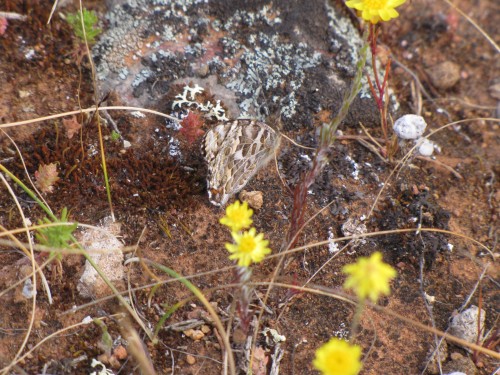
Butterfly or moth? (Hard to see – it is right in the middle of the photo just above the two flowers)
Birds:
This is one area of wildlife where I do have a great deal of knowledge in this area. In all, there are probably well over 150 different species of birds in the region – say, within a 20km radius. Included in this list are a few waterbirds (present in dams and a wetland area near the caravan park), eagles, hawks, pigeons, many species of honeyeaters, chats, babblers, parrots, thornbills, magpies, ravens, woodswallows, finches and the list goes on.
I have included only two photos today (see below). Of special note is the Apostlebird, an uncommon species in South Australia. The township of Peterborough has several large family groups of this species and is one of only a handful of places in the state where they can be reliably seen. The are very common in the eastern states, however.
Wild peach tree near Peterborough
It is always a delight to see fruit on wild peach trees in South Australia. The bright red fruit the size of a small apricot stands out in the drab grey/green of much of the natural vegetation in the drier parts of South Australia. The trees are relatively common throughout our state in bushland, bush reserves and roadside verges.
This delicious fruit – also known as the quandong (Santalum accuminatum) – grows just up the road from our front gate here in Murray Bridge but I haven’t checked out the trees in recent times to see if they are fruiting. The tree and fruit shown in today’s photos is growing in the Greg Duggan Nature Reserve near Peterborough. I have been posting photos of the wildflowers in this reserve over recent days (look back through my archives to see them).
The quandong fruit can be eaten straight from the tree but can be a little on the dry side for my taste. It is also prone to infestation from grubs, so biting into a wild peach can ensure an extra element you hadn’t bargained for! Where this fruit really excels is when it is used to make a quandong fruit pie. Eating the pie slightly warm with cream or icecream is heaven in a bowl. Trust me.
Interestingly, some orchardists have attempted to produce this fruit commercially in recent years. I am not up to date about how successful they have been because the growing requirements for this plant are quite demanding, in so much as they need a host plant.
The photos on this post are not as good as one my wife took some years ago and posted on her site about Australian Native Plants here. She has written another article about the species here.
Wild peach tree (quandong)
From the lookout at Peterborough
When visiting family at Peterborough in the mid north of South Australia I try to take some time out to do a little birding, and then write about my sightings on another of my sites, Trevor’s Birding. The area around Peterborough is quite good for birding because most of the species are familiar to me but there is also a sprinkling of dry land species more common further north, birds I don’t often, if ever, see down south in Murray Bridge where I live.
On a visit last September I visited the lookout on Tank Hill at the end of Government Road. While I had done some birding there some years ago it had been while since my last visit. Since then the local council has installed a great lookout overlooking the township.
Leading up to the wheelchair friendly ramp is a well maintained gravel path through the reserve. Over recent days I have posted photos of some of the wildflowers I saw in this, the Greg Duggan Nature Reserve. While the predominant plant in the reserve is native pine (Callitris spp) there is quite a variety of other Australian native plants in the reserve as well. I have posted photos of some of these over recent days, and have more to share in coming days.
